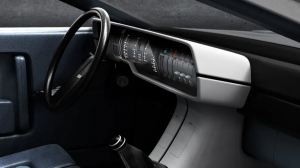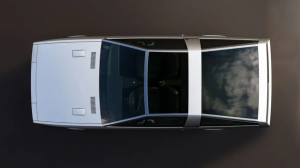Tips for Eco-Friendly Car Care and Collision Repair
In today’s world, where environmental sustainability has become a global priority, the automotive industry in Australia is no exception. Car owners are increasingly seeking ways to minimize their ecological footprint, focusing on eco-friendly car care and collision repair practices. This guide offers practical tips and insights for Australians looking to adopt greener methods in maintaining and repairing their vehicles, ensuring both environmental benefits and potential cost savings.
The Importance of Eco-Friendly Practices in Automotive Care
Environmental Impact
Traditional automotive maintenance and collision repairs often involve the use of hazardous materials, such as oil, paint, and solvents, which can have detrimental effects on the environment. These substances can contaminate soil and waterways, harm wildlife, and contribute to air pollution. By adopting eco-friendly practices, car owners can significantly reduce their environmental impact, ensuring a healthier planet for future generations.
Regulatory Compliance
Australia has stringent environmental regulations that govern various aspects of automotive care. Compliance with these regulations not only helps protect the environment but also ensures that car owners avoid potential fines and penalties. Eco-friendly practices are increasingly becoming a standard in the industry, driven by both governmental policies and consumer demand for sustainable options.
Eco-Friendly Car Care Tips
Use Biodegradable Cleaning Products
Switching to biodegradable and eco-friendly cleaning products for your car’s exterior and interior is a simple yet effective way to reduce environmental harm. These products are made from natural materials that break down easily without leaving harmful residues, offering a safe alternative for both the environment and your health.
Water Conservation Techniques
Water scarcity is a growing concern in Australia, making water conservation in car care a crucial consideration. Techniques such as using waterless car wash products, which capture dirt and grime without the need for rinsing, can save significant amounts of water. Additionally, collecting and recycling water during traditional washes can further reduce water usage.
Regular Maintenance for Efficiency
Keeping your car in optimal condition through regular maintenance can enhance fuel efficiency and reduce emissions. Simple actions, like ensuring tires are properly inflated and using eco-friendly lubricants for oil changes, can make a substantial difference. Regular maintenance not only benefits the environment but can also lead to cost savings by improving your car’s performance and longevity.
Green Collision Repair Methods
Choosing Eco-Friendly Repair Shops
Selecting a collision repair shop that practices eco-friendly methods is crucial. Look for shops that use water-based paints, which emit fewer volatile organic compounds (VOCs) than traditional solvent-based paints. Additionally, shops that recycle parts and materials demonstrate a commitment to reducing waste and conserving resources.
Sustainable Materials
Using recycled parts and materials for car repairs not only supports environmental sustainability but can also be cost-effective. Many recycled parts are as reliable as new ones and come at a fraction of the cost, making them an excellent option for both your wallet and the planet.
Innovative Repair Technologies
Advancements in technology have led to more sustainable collision repair methods. For example, LED lighting in repair shops consumes less energy than traditional lighting, while high-efficiency spray booths minimize energy use and reduce paint waste. Opting for repair shops that invest in such technologies can contribute to a smaller environmental footprint.
The Future of Eco-Friendly Automotive Care
Technological Advancements
The automotive industry continues to evolve, with new technologies emerging that promise even greater sustainability. From electric vehicles to eco-friendly manufacturing processes, the future of automotive care looks green. Staying informed about these advancements can help car owners make more sustainable choices.
Community and Government Initiatives
Australian government incentives and community programs play a vital role in promoting eco-friendly automotive care. Whether through rebates for purchasing electric vehicles or support for businesses adopting green practices, these initiatives encourage a shift towards sustainability across the industry.
Conclusion
Adopting eco-friendly car care and collision repair practices is not only beneficial for the environment but can also offer savings and compliance advantages for Australian car owners. By making informed choices and supporting businesses that prioritize sustainability, we can contribute to a greener, healthier future for our planet.
Embracing eco-friendly automotive care practices represents a meaningful step towards environmental stewardship, demonstrating that even small changes can have a significant impact. As the industry continues to innovate and evolve, the opportunities for sustainable automotive care in Australia will only grow, paving the way for a cleaner, more sustainable future.
Looking For More? Check these other helpful posts from DPP
- The Importance of Colour Matching in Auto Body Repair – This post emphasizes the technical and aesthetic importance of precise colour matching in auto body repair.
- How to Protect Your Car’s Value with Professional Collision Repair – It discusses how professional collision repair can help preserve your car’s value post-collision.
- The Future of Collision Repair in Adelaide: Innovations to Watch – This article explores upcoming innovations in collision repair, including eco-friendly solutions.
- Dealing with the Emotional Aftermath of a Car Accident – Offers advice on navigating the emotional recovery after a car accident.
- The Benefits of Regular Vehicle Maintenance and Inspections: A Guide for Australian Drivers – Highlights the importance of regular maintenance for vehicle longevity and efficiency, aligning with eco-friendly practices.
The Future of Collision Repair in Adelaide: Innovations to Watch
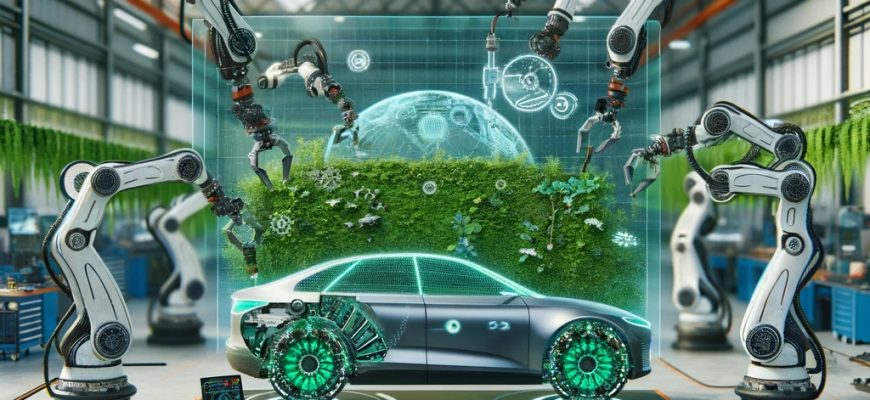
In the heart of Adelaide, the collision repair industry is on the cusp of a revolution. With vehicles becoming increasingly sophisticated and customer expectations soaring, the demand for advanced, efficient, and eco-friendly repair solutions has never been higher. This article peels back the curtain on the most groundbreaking innovations shaping the future of collision repair in Adelaide, offering a glimpse into a world where technology not only repairs but revitalizes.
The Current State of Collision Repair in Adelaide
The collision repair sector in Adelaide, like many worldwide, grapples with a myriad of challenges. Skilled labour shortages, the escalating costs of traditional repair methods, and the rapid evolution of automotive technology are pushing the industry towards a tipping point. Traditional repair shops find themselves at a crossroads: evolve or risk obsolescence. In response, forward-thinking Adelaide repairers are turning to innovative solutions to pave the way forward. Dynamic Paint N Panel is proud to incorporate new and exciting repair methods while keeping our old-fashioned personal service at the very forefront of your crash repair experience.
Innovations Transforming Collision Repair
Advanced Diagnostics and Repair Technologies
The dawn of advanced diagnostics has ushered in a new era for collision repair. In Adelaide, cutting-edge diagnostic tools equipped with artificial intelligence (AI) and 3D scanning capabilities are beginning to become more prevalent. These technologies enable repair technicians to assess vehicular damage with unprecedented accuracy and efficiency, mapping out a precise repair plan that mitigates the chances of oversight.
Eco-Friendly Repair Processes
Sustainability is no longer just a buzzword but a guiding principle for the future of collision repair. Adelaide’s industry leaders are pioneering the use of eco-friendly materials and processes, significantly reducing the environmental footprint of repair work. Innovations include water-based paints, which emit fewer volatile organic compounds (VOCs), and recycling initiatives that ensure materials like metal and plastic find new life post-repair.
Automation and Robotics
Robotics has transformed the landscape of many industries, and collision repair is no exception. Automated technologies, from robotic painting arms to drones for damage assessment, are enhancing the precision of repairs while slashing turnaround times. This automation not only improves the quality of repair work but also addresses the labour shortage by shifting the workforce towards more skilled and technologically focused roles. While this technology is certainly exciting we are yet to these technologies become common in Australia (for now!)
Mobile Repair Services
In an age where convenience is king, mobile repair services are gaining traction in Adelaide. These services offer the ultimate convenience by bringing the repair shop to the customer, whether at home or work. Mobile repair units are equipped with the tools and technologies needed to perform a wide range of repairs on-site, providing a flexible and customer-centric approach to collision repair.
Impact on Industry and Consumers
These innovations are set to redefine the collision repair experience for both the industry and consumers. For customers, the benefits are clear: faster, more accurate repairs that often come at a lower cost and with a smaller environmental impact. On the industry side, the shift towards high-tech repair solutions opens up new avenues for business growth and development, albeit with a learning curve for adopting new technologies.
Challenges and Considerations
Despite the clear advantages, the transition to these innovative repair methods is not without its hurdles. High initial investments in technology, ongoing training for staff, and navigating regulatory landscapes are significant considerations for Adelaide’s repair shops. Moreover, as the industry evolves, so too must consumer perceptions and understanding of what constitutes quality collision repair in the modern age.
The future of collision repair in Adelaide is bright, illuminated by the beacon of innovation. From advanced diagnostics and sustainable practices to automation and the convenience of mobile services, the industry is poised for a transformative leap forward. As Adelaide’s repair shops embrace these technologies, they not only ensure their survival but also elevate the standard of repair for vehicles hitting the road tomorrow. In this rapidly changing landscape, one thing remains certain: innovation is the key to driving the future of collision repair in Adelaide.
The Environmental Impact of Collision Repairs
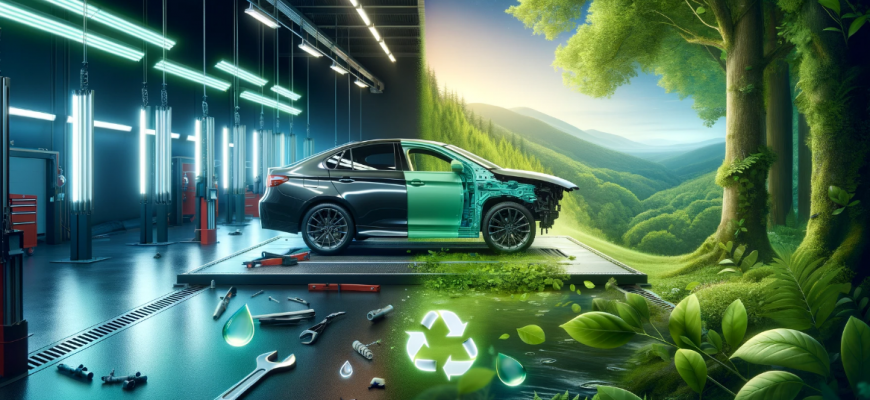
In the bustling streets of Australia, vehicles are an indispensable part of daily life, making collision repairs a frequent necessity. However, the environmental footprint of these repairs is often overlooked. This article delves into the significant impact collision repairs can have on the environment and showcases how Adelaide’s repair shops, particularly Dynamic Paint N Panel, are leading the charge in adopting more sustainable practices. Their efforts not only aim to protect our planet but also offer cost savings for customers, setting a commendable example for the industry.
The Environmental Challenge of Collision Repairs
Collision repair processes, from dent removal to full bodywork, traditionally involve activities that pose considerable environmental risks. The use of solvent-based paints releases volatile organic compounds (VOCs) into the atmosphere, contributing to air pollution and posing health risks to workers. Energy consumption is high, with extensive use of electricity for welding, painting, and drying. Moreover, the disposal of non-recyclable materials, such as certain plastics and composites, adds to the growing problem of landfill waste. In Australia, the automotive repair industry is grappling with these challenges, seeking ways to mitigate its environmental impact while maintaining high standards of service.
Adelaide’s Approach to Sustainable Collision Repairs
Adelaide has emerged as a frontrunner in addressing the environmental concerns associated with collision repairs. Shops across the city are adopting innovative practices to reduce their ecological footprint. Key among these practices is the shift towards water-based paints, which significantly lower VOC emissions compared to their solvent-based counterparts. Energy efficiency is another focus area, with many shops investing in LED lighting and energy-efficient equipment to cut down electricity use. Recycling has also taken center stage, with efforts to salvage and reuse metal parts and plastics wherever possible.
Dynamic Paint N Panel: A Case Study
Dynamic Paint N Panel stands out in Adelaide’s automotive repair landscape for its commitment to sustainability. This shop has embraced a holistic approach to eco-friendly practices, starting with the adoption of water-based paints that are less harmful to the environment and safer for employees. They have invested in state-of-the-art equipment that not only performs repairs more efficiently but also consumes less energy.
Dynamic Paint N Panel’s dedication to minimizing waste is evident in their rigorous recycling program, which ensures that all recyclable materials are properly processed, reducing landfill contribution. Their efforts have not gone unnoticed, earning them recognition within the industry for their environmental stewardship.
What sets Dynamic Paint N Panel apart is their ability to demonstrate that eco-friendly repairs can also be cost-effective for customers. By reducing waste and optimizing repair processes, they are able to offer competitive pricing without compromising on quality. This win-win scenario encourages more vehicle owners to choose sustainable repair options, contributing to a larger positive impact on the environment.
The Benefits of Eco-Friendly Collision Repairs
The shift towards sustainable collision repairs offers numerous benefits. Environmentally, it significantly reduces the industry’s carbon footprint, decreases air and water pollution, and minimizes waste. For customers, it often translates to lower repair costs and the peace of mind that comes from choosing an environmentally responsible service. Furthermore, repair shops that adopt green practices enhance their reputation, attracting customers who value sustainability.
The Australian government and various environmental organizations support these initiatives, offering incentives and recognition to businesses that lead the way in sustainability. This not only helps the environment but also sets a standard for the industry, encouraging more shops to adopt eco-friendly practices.
The environmental impact of collision repairs is a pressing issue that demands attention and action. Adelaide’s repair shops, led by pioneers like Dynamic Paint N Panel, are showing that it is possible to combine high-quality service with environmental responsibility. Their efforts are not only safeguarding the planet but also paving the way for a more sustainable automotive repair industry. As consumers, supporting businesses that prioritize eco-friendly practices is a powerful way to contribute to environmental conservation. Together, we can drive towards a greener, more sustainable future.
Other Sources
Dynamic Paint N Panel. “Our Commitment to the Environment.”
The Latest Trends in Auto Body Repair Technologies: Navigating the Future of Automotive Care in Australia
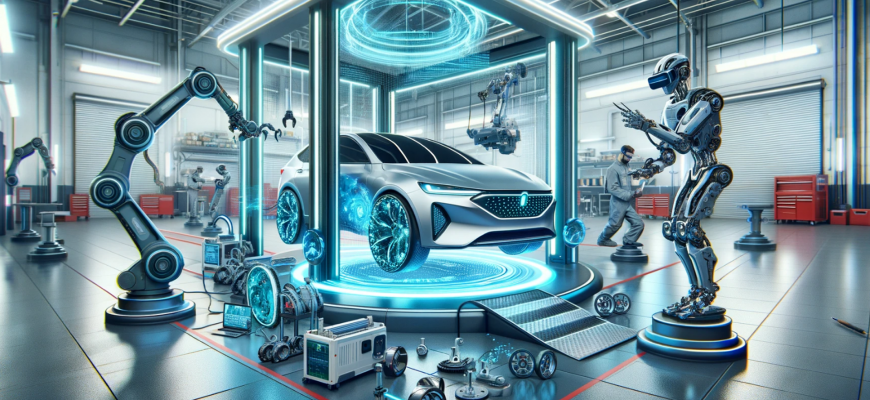
The auto body repair industry is witnessing a remarkable transformation, fueled by technological advancements that promise to redefine the way we maintain and repair our vehicles. In Australia, where the automotive sector is a pivotal part of the economy and daily life, these innovations are not just enhancing operational efficiencies but are also significantly improving the consumer experience. This article delves into the latest trends in auto body repair technologies, highlighting how they benefit Australian vehicle owners.
Paintless Dent Removal (PDR) Techniques
Paintless Dent Removal (PDR) represents a significant leap forward from traditional dent repair methods. And it’s something we are particularly proud of at Dynamic Paint N Panel. This technique involves the meticulous manipulation of dents from behind the vehicle’s paneling, preserving the original paintwork. For consumers, the advantages are manifold: PDR offers a cost-effective solution to dent repairs, without the need for repainting, thereby maintaining the vehicle’s value and aesthetic appeal. Moreover, PDR can often be completed in a fraction of the time required for conventional repairs, providing a swift return to the road, and at a lower cost than conventional repairs.
Advanced Diagnostics and Robotics
The integration of advanced diagnostics and robotics in auto body repair is setting new standards for accuracy and efficiency. Sophisticated scanning tools can now detect minute damages invisible to the naked eye, ensuring comprehensive repair. Robotics, on the other hand, brings unmatched precision to the repair process, reducing the possibility of human error. For the Australian consumer, this translates to more accurate estimates, superior repair quality, and ultimately, enhanced safety and reliability of the repaired vehicle.
Augmented Reality (AR) in Repair Services
Augmented Reality (AR) is introducing a new dimension to auto body repair, from training technicians with virtual simulations to enhancing customer service. AR can project virtual images of repairs over the actual vehicle, helping consumers understand the work required and the parts involved. This technology fosters transparency and trust, empowering Australian consumers with knowledge and insight into their vehicle repairs.
Augmented Reailty is still largely untested and relies heavily on AI technology and training of specialist technicians – is this style of repair still decades away, or just around the corner?
The Impact of Insurance and Warranty Advances
Technological advancements are also streamlining the insurance claims and warranty process, offering faster and more efficient service. Digital platforms enable quicker submission of claims and documentation, reducing processing times and getting repairs started sooner. For Australians, this means less downtime without their vehicle and a smoother, more convenient claims experience.
Challenges and Considerations
Despite the promising advancements, challenges such as the need for skilled technicians and the initial cost of adopting new technologies persist. Additionally, ensuring equitable access to these advanced repair services across both urban and rural Australia remains a concern.
The landscape of auto body repair in Australia is evolving, driven by technological innovations that promise improved efficiency, sustainability, and customer satisfaction. As the industry continues to embrace these trends, Australian consumers stand to benefit from repairs that are quicker, more affordable, and of higher quality than ever before. Embracing these advancements is not just about keeping pace with technology but about moving forward into a future where auto care is more accessible, transparent, and aligned with the values of today’s society.
One thing that never changes is DPPs commitment to ensuring flawless repairs, and top notch customer service no matter what technology we have at our disposal. We started using traditional methods and have continued to evolve with advances in technology. To see how we can improve the of your car’s body work call us today. We love helping South Australian drivers beaming with pride over their car.
Car Accidents Without Insurance: A Guide for South Australian Drivers
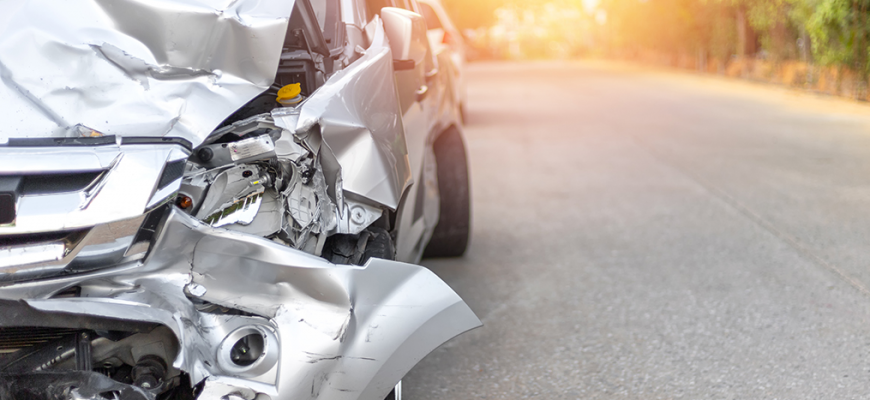
Every year, numerous South Australians find themselves tangled in the aftermath of car accidents. Among these incidents, a significant portion involves drivers without insurance, leading to complex legal and financial dilemmas. This article aims to navigate South Australian drivers through the immediate steps and considerations following a car accident, particularly when uninsured, ensuring safety and minimizing potential repercussions.
Understanding Insurance Requirements in South Australia
In South Australia, it’s mandatory for all vehicle owners to have Compulsory Third Party (CTP) insurance, which is included in vehicle registration fees. This insurance covers injuries to people if the vehicle owner or driver is at fault in an accident. However, it does not cover damage to vehicles or property, which is where comprehensive or third-party property insurance comes into play. Driving without at least CTP insurance is illegal, with severe penalties for non-compliance, highlighting the gravity of maintaining at least the minimum insurance coverage.
Immediate Steps Following a Car Accident
Ensure Safety
The immediate aftermath of a car accident can be chaotic and confusing. The first priority should always be safety. Check for injuries among all parties involved. If anyone is injured, call emergency services immediately. If the vehicles are posing a hazard, move them to a safe location, if possible.
Call for Help
South Australian law requires the police to be notified if the accident causes injury or significant property damage. If in doubt, it’s safer to call the police. They can provide necessary assistance and create an official accident report, which may be crucial for legal and insurance purposes.
Assessing the Situation and Information Exchange
Once everyone’s safety is ensured, exchange names, addresses, phone numbers, and vehicle details with the other driver(s). Note the location and time of the accident, and if possible, take photos of the scene and any damages. Avoid discussions about who is at fault, as these statements can complicate legal and insurance matters.
Dealing with a Car Accident Without Insurance
Legal and Financial Implications
Driving without insurance can expose you to significant financial risks. If found at fault, you could be liable for the cost of repairs to all vehicles involved, as well as compensation for any injuries. These expenses can be financially crippling, underscoring the importance of at least having CTP coverage.
Seeking Legal Advice
It’s advisable to consult a legal professional to understand your rights and obligations following an accident, especially if uninsured. They can provide guidance on how to navigate potential claims against you and explore options for managing the financial implications.
Importance of Choosing a Trusted Crash Repairer
In the event of a car accident, choosing a reputable crash repairer is crucial, particularly before contacting your insurer, if you have a choice of repairer. This decision can significantly impact the quality of repairs and the overall outcome of your claim. Investigate local repairers, read reviews, and seek recommendations to find a trustworthy service provider. This proactive approach can prevent insurers from directing you to less reputable repairers, ensuring a higher standard of repair for your vehicle.
Reporting to Authorities and Insurance Considerations
Report the accident to the police if required by South Australian law, and obtain a copy of the report for your records. If you have insurance that covers damage to others, notify your insurer as soon as possible. Provide all necessary details and cooperate with their investigation. If you lack comprehensive insurance, discussing the situation with a legal advisor can help you understand how to manage any claims made against you.
Navigating a car accident without insurance in South Australia requires a clear understanding of legal requirements, immediate steps for safety, and strategic decisions regarding vehicle repairs. While the consequences of driving uninsured can be severe, taking informed actions post-accident can mitigate the negative impacts. Ultimately, maintaining appropriate insurance coverage is the most effective strategy to protect yourself from the significant financial and legal risks associated with car accidents. Prioritize safety, stay informed, and drive responsibly to minimize the chances of finding yourself in such a predicament.
Australia’s Road Safety Crisis: Falling Behind the World and What It Costs You
Australia’s commitment to road safety has traditionally been strong, with various initiatives aimed at reducing road fatalities and injuries. However, as technology advances, the gap between Australia’s safety standards for new vehicles and those of leading global benchmarks, notably the European Union (EU), is becoming increasingly evident. This disparity is highlighted by the slow adoption of Advanced Driver Assistance Systems (ADAS) technologies in Australian vehicles, technologies that are becoming mandatory in Europe and have proven potential to save lives on the road.
The Urgency for Advanced Safety Features
The EU’s proactive stance, mandating a suite of ADAS features for all new car models from July 2022 and for all new cars from July 2023, sets a precedent that Australia is currently trailing. Features like Intelligent Speed Assistance, lane-keeping assist, blind-spot detection sensors, and “black box” event recorders are now compulsory in Europe, underlining a commitment to leveraging technology for road safety.
Australia’s response, albeit cautious, is evolving. The Australian Design Rules (ADRs) are under review to potentially include these life-saving features, with automated emergency braking slated to become mandatory by 2026. This gradual inclusion of ADAS features marks a pivotal shift in Australia’s road safety strategy but also underscores the need for urgency given the technology’s potential impact on road safety outcomes.
Bridging the Safety Standards Gap
The stark difference in vehicle safety standards between Australia and the EU highlights an urgent need for Australia to align more closely with global best practices. As noted by Ingrid Johnston, CEO of the Australasian College of Road Safety, the delay in mandating new safety features means a prolonged period before these technologies become standard across the Australian vehicle fleet, given the country’s average vehicle age of around 10 years.
This delay has tangible consequences. For example, a NSW government trial suggested that speed assistance technology alone could reduce fatalities by 19 percent if universally adopted. The cost of integrating such technology, estimated by the European Commission to add $300 to $400 to the cost of new cars, is a small price to pay for the potential to save lives.
Challenges and Considerations for Local Implementation
The path to adopting these advanced safety features in Australia is not without its challenges. Infrastructure readiness, including comprehensive GPS coverage and accurate speed limit maps, is crucial for technologies like Intelligent Speed Assistance to be effective. Similarly, the effectiveness of lane-keeping assist systems is contingent on the quality of road markings, which may not be consistent across all Australian roads.
These considerations emphasize the need for a dual approach that combines regulatory changes with infrastructure improvements to support the effective deployment of ADAS technologies. As Stuart Newstead from the Monash Accident Research Centre points out, the evaluation of these technologies’ benefits in the local context is essential to ensure their effectiveness and suitability for Australian roads.
Consumer Guidance and International Alignment
The role of the Australian New Car Assessment Program (ANCAP) in providing safety ratings for new vehicles is crucial in guiding consumer choices towards safer cars. ANCAP’s assessments, which include evaluating non-mandatory safety features, play a vital role in raising awareness about vehicle safety standards and encouraging manufacturers to prioritize safety.
Furthermore, aligning Australia’s design standards with international standards, as pursued by the Federal Transport Department, ensures that Australian drivers have access to vehicles equipped with the latest safety technologies at competitive prices. This alignment, while respecting the unique aspects of the Australian market, is key to ensuring that safety innovations are not delayed in their introduction to the Australian market.
Moving Forward
The debate over the role of regulation versus market response, as highlighted by Tony Webber of the Federal Chamber of Automotive Industries, underscores the complexity of advancing vehicle safety standards. While the market has naturally evolved to include more safety features over time, regulatory intervention is necessary to ensure that all vehicles, regardless of price point, are equipped with essential safety technologies.
As Australia looks to reduce road fatalities and injuries, the integration of ADAS technologies into the Australian Design Rules represents a critical step forward. By learning from global best practices, especially those in the EU, and addressing the unique challenges of the Australian landscape, Australia can enhance the safety of its vehicle fleet, ultimately saving lives and reducing the burden of road trauma on society.
For more insights into vehicle safety and maintenance, explore our blog for articles like “The Importance of Using Genuine Parts In Crash Repairs” and “Worn Tyres Is Saving A Few Dollars Worth The Risk On The Road” at https://dynamicpaintnpanel.com.au/blog/.
Revealed: The Shocking Truth About Australia’s Ageing Car Fleet Putting Lives at Risk
The Crucial Link Between Vehicle Age, Repair Quality, and Road Safety
In an era where economic constraints are a stark reality for many, the trend of retaining older vehicles has become increasingly prevalent. This shift towards aging automobiles presents a significant challenge to road safety, given the absence of modern safety features in these vehicles. As a leading crash repair specialist, we understand the profound impact that both vehicle age and repair quality have on road safety. Through this lens, we explore the multifaceted relationship between these elements and offer insights into how drivers, repairers, and policymakers can navigate these challenges to ensure safer roads for everyone.
Understanding the Safety Implications of Older Vehicles
The average age of a vehicle in Australia now exceeds 10 years, with a sizable portion of the fleet significantly older. These vehicles, often devoid of recent advancements in safety technology, place their occupants at a higher risk during road incidents. From lane departure warnings to autonomous emergency braking, the absence of these innovations in older models underscores a growing digital divide in vehicle safety. This divide not only compromises the safety of individuals but also poses broader risks to public road safety.
The Role of Repair Practices in Ensuring Vehicle Safety
The safety of a vehicle post-accident is heavily contingent upon the quality of repairs undertaken. Incorrect or substandard repairs can severely undermine a vehicle’s structural integrity and the functionality of its safety systems. This issue is particularly critical for older vehicles, where sourcing appropriate replacement parts can be challenging, leading to potential compromises in repair quality.
As crash repair specialists, we emphasise the importance of adhering to stringent standards in vehicle repair. It is imperative to ensure that vehicles, especially those involved in accidents, are restored to their pre-accident condition, not just aesthetically but, more importantly, in terms of their safety capabilities. This commitment to excellence in repair work is vital in maintaining the safety of the vehicle on the road.
Bridging the Gap with Education and Policy
While technological advancements continue to enhance vehicle safety, economic realities often limit the ability of drivers to access newer, safer vehicles. It is here that the role of informed repair practices, alongside supportive policies and educational efforts, becomes paramount.
Incentives for Upgrading: To encourage the transition towards vehicles equipped with advanced safety features, we advocate for policy incentives such as rebates, tax breaks, or scrappage schemes. Such initiatives can significantly reduce the financial burden on individuals, making it more feasible to opt for newer, safer models.
Raising Awareness: Educating drivers about the importance of vehicle safety and the potential risks associated with older cars is crucial. Targeted educational campaigns can help illuminate the benefits of modern safety features, particularly for young or inexperienced drivers who are more likely to own older vehicles. Awareness can also extend to the significance of choosing reputable repair services that uphold the highest standards of safety and quality.
Public Transport and Road Design: Enhancing public transport options and investing in safer road designs can mitigate some of the risks associated with driving older vehicles. For regions with an aging vehicle fleet, such as South Australia, these measures are especially critical in reducing the overall road accidents.
The landscape of vehicle safety is ever-evolving, with new technologies continually raising the bar for road safety. However, the pervasive issue of older vehicles lacking these advancements, coupled with the critical need for high-quality repair practices, presents ongoing challenges. As a dedicated crash repairer, our role extends beyond mere repairs; it encompasses a commitment to ensuring that every vehicle we restore meets the highest standards of safety and performance.
In navigating the complexities of vehicle age, repair quality, and safety, a collective effort is required. By combining technological advancements, economic incentives, and educational efforts, we can work towards a future where road safety is not a privilege afforded by newness but a standard upheld across the board. Together, we can drive towards a safer future for all road users, ensuring that safety is not compromised by the age of a vehicle or the quality of its repairs.
How Overinflated Tyres Are Quietly Destroying Your Car’s Performance and Putting Your Life at Risk!
Motorists across the country are being warned about the dangers of driving with overinflated tyres, as the risk of accidents and blowouts increases significantly. Experts emphasise that excessive tyre pressure can lead to instability, affecting the vehicle’s handling, cornering ability, and braking performance.
How Overinflation Affects Handling
Even a slight deviation in tyre pressure, measured in psi (pounds per square inch), can have a profound impact on a vehicle’s handling, particularly on wet roads. Lower tyre pressures reduce load capacity and stability, while higher pressures provide greater capacity. Properly inflated tyres ensure even weight distribution across the tyre’s footprint, promoting stability and control.
However, underinflated tyres wear out unevenly, with the tread’s shoulder sections wearing faster than the centre due to inadequate support. When tyres encounter wet roads, factors such as tread depth, speed, and vehicle weight influence the risk of hydroplaning, where water reduces friction between tyres and the road, leading to loss of traction.
Preventing Accidents
In the event of hydroplaning, experts advise against slamming on the brakes. Instead, gradually release the gas pedal until steering control is regained. Properly inflated tyres maintain adequate pressure in the tread’s centre, preventing collapse and ensuring traction, especially in wet conditions. Driving with underinflated rear tyres is particularly challenging, requiring the driver to slow down to regain control.
Importance of Maintenance
While tyre manufacturers design tyres for optimal performance, neglecting tyre pressure maintenance compromises safety. Motorists are urged to adhere to recommended tyre pressures specified in the vehicle’s handbook or tyre placard. Regularly checking tyre pressure, ideally once a month, is crucial to prevent handling issues and excessive wear, particularly before embarking on long highway journeys.
Wear and Tear
Incorrect tyre pressure not only affects handling but also leads to excessive tyre wear and damage to sidewalls, increasing the risk of tyre bursts. Maintaining equal tyre pressure on all sides is essential for stability and adaptability on the road. Overinflated tyres are more susceptible to damage, deformation, reduced grip, and accelerated wear, especially in the centre.
Driving with overinflated tyres poses serious safety risks and can lead to accidents, blowouts, and excessive tyre wear. Regular maintenance and adherence to recommended tyre pressures are vital to ensure safe and efficient vehicle operation on the roads. Stay informed, stay safe.
Worn Tyres: Is Saving A Few Dollars Worth The Risk On The Road?
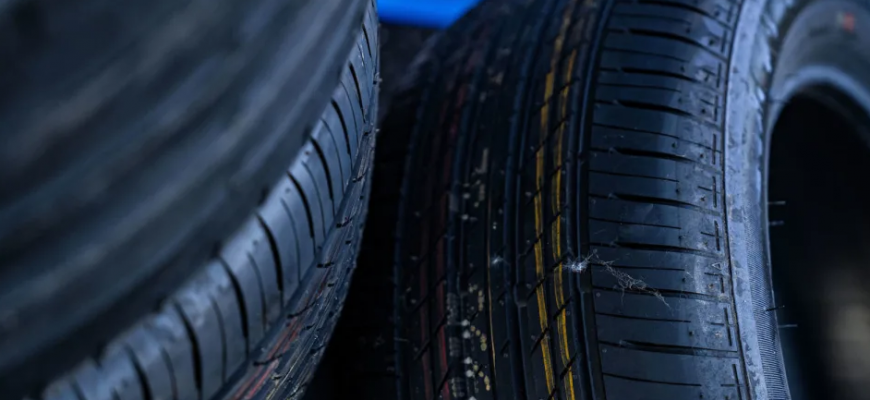
Drivers in Australia are being cautioned against the use of part-worn car tyres due to potential safety risks, particularly when the weather starts to get colder. While cheaper than new tyres, purchasing part-worn tyres, which have been removed from other vehicles but still have significant tread life, poses hazards that may not be immediately visible.
According to industry experts, a substantial number of part-worn tyres, estimated at 5.5 million annually, are sold in Australia. These tyres often originate from countries like Germany, where drivers replace tyres with adequate tread depth before reaching the legal limit, making them suitable for resale as part-worn tyres in Australia.
Part-Worn Tyres Overview
Part-worn tyres are essentially previously used tyres that still have usable tread life. They account for approximately 10% of all tyre sales in Australia. Imported part-worn tyres must meet specific regulations to be considered road-legal and safe for use.
Regulations in Australia
In Australia, regulations dictate that second-hand tyres must be in good condition, free from bulges in the sidewall, large cuts in the tread, or any visible structural damage. They should have a minimum tread depth of 2mm across the width and circumference and must be clearly marked as “part-worn” in uppercase letters at least 4mm in height on the sidewalls. Despite these regulations, some suppliers may not comply, and consumers are urged to ensure that any part-worn tyres they purchase meet these standards to avoid potential accidents.
Pros and Cons of Part-Worn Tyres
While part-worn tyres offer cost savings compared to new ones, they do not last as long and may require more frequent replacement. The initial savings may be offset by the shorter lifespan of part-worn tyres, making the long-term cost-effectiveness questionable. Additionally, part-worn tyres may have less grip, particularly in wet conditions, increasing the risk of accidents.
Furthermore, studies have shown that a significant portion of part-worn tyres sold in Australia do not comply with regulations, with some considered potentially dangerous due to hidden damage or incorrect repairs. Therefore, while part-worn tyres may seem like a budget-friendly option, the potential safety risks associated with them should not be overlooked.
Alternatives to Part-Worn Tyres
In addition to new and part-worn tyres, consumers in Australia have the option of remoulded or retreaded tyres. Remoulded tyres, if manufactured in compliance with regulations, can offer a cost-effective and environmentally friendly alternative to new tyres.
Ultimately, the decision to purchase part-worn tyres in Australia depends on individual preferences and risk tolerance. However, given the potential safety concerns and regulatory issues associated with these tyres, many experts recommend opting for new tyres or certified remoulded options to ensure maximum safety on the road.
Was this 1974 Korean/Italian Coupe the inspiration for Musk’s Cybertruck?

In a remarkable showcase of innovation meeting heritage, Hyundai Motor recently unveiled the restored Pony Coupe Concept at the inaugural Hyundai Reunion, an event that not only celebrated the brand’s storied past but also pointed towards its ambitious future direction. This event marked a significant moment in Hyundai’s history, demonstrating how far the company has evolved from its early days.
The Pony Coupe Concept, originally presented at the 1974 Turin Motor Show, has been brought back to life under Hyundai’s restoration project. This initiative is more than a nod to the company’s origins; it’s a testament to the daring spirit, passionate ambition, and visionary foresight that have propelled Hyundai from a fledgling automaker to a global powerhouse.
Euisun Chung, Executive Chair of Hyundai Motor Group, paid homage to his grandfather, Ju-young Chung, Hyundai’s founding chairman, for his pivotal role in Korea’s post-war economic rebuild and his dream of establishing Korea as a capable developer of its vehicles. This vision has clearly been realized, with Hyundai now standing as a testament to Korean innovation and automotive excellence.
As the automotive industry pivots toward electrification, Hyundai’s President and CEO, Jaehoon Chang, emphasized the company’s commitment to its foundational values. Through initiatives like the Hyundai Reunion and other heritage communication efforts, Hyundai aims to leverage its rich history as a unique catalyst for future innovations.
The event also served as a reflection on Hyundai’s beginnings, with legendary designer Giugiaro sharing insights into the development of the 1973 Pony Coupe Concept. Despite initial skepticism due to Hyundai’s inexperience at the time, Giugiaro was ultimately impressed by the passion and commitment of Hyundai’s engineers. Their eagerness to learn and adapt played a crucial role in the company’s evolution.
Luc Donckerwolke, President and Chief Creative Officer, alongside SangYup Lee, Executive Vice President and Head of Hyundai Design Center, highlighted the restoration of the Pony Coupe Concept as a milestone in Hyundai’s history. It symbolizes the company’s journey from its humble beginnings to its commitment to the future, serving as a legacy for future generations.
The Hyundai Reunion also underscored the importance of bridging past and present, with Sungwon Jee, Senior Vice President and Global Chief Marketing Officer, noting the significance of bringing together individuals who were instrumental in Hyundai’s early days with those leading the company into the future. This event not only launched the Hyundai Reunion platform but also showcased Hyundai’s enduring spirit of innovation, which continues to drive the brand forward.
Through the rebirth of the Pony Coupe Concept and the celebration of its heritage, Hyundai Motor Company reaffirms its dedication to innovation, its respect for its roots, and its vision for a future where it continues to push the boundaries of automotive technology and design.






